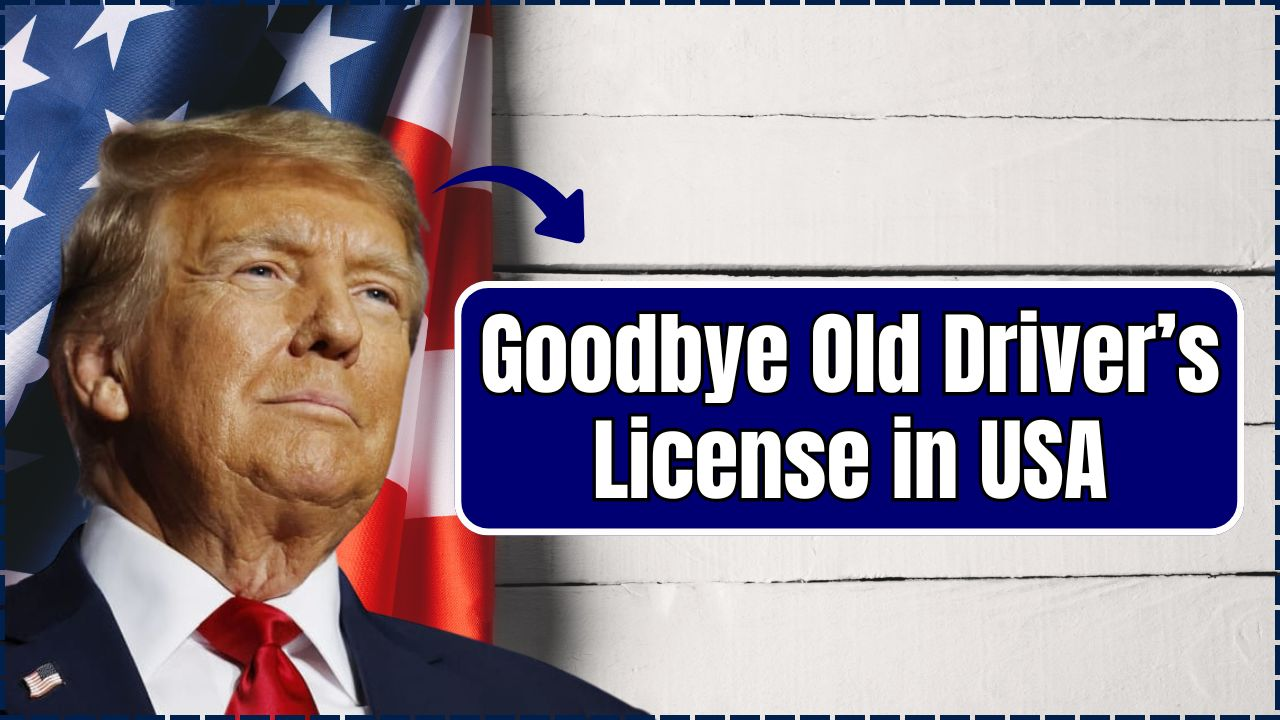A sense of shock and confusion is rippling through the American driving community as headlines warn of old driver’s licenses being banned and steep $500 fines on the horizon. For millions, a driver’s license is a symbol of freedom and a daily necessity. The thought of it suddenly becoming invalid, coupled with the threat of a hefty penalty, is understandably causing alarm. This isn’t just a minor policy update; it’s a significant shift that appears to affect everyone from young adults to senior citizens, leaving many to wonder what is happening, why, and what they need to do to stay on the right side of the law. The truth is a mix of hard deadlines and evolving state-level regulations that every driver needs to understand.

The most immediate change is the federal REAL ID Act, which is fast approaching its final enforcement date. After May 7, 2025, your standard, old-format driver’s license will no longer be a valid form of identification for federal purposes, most notably for boarding domestic flights or entering secure federal facilities. This is not a rumor; it’s a long-planned security upgrade that requires action from drivers in every state. Ignoring this deadline could lead to significant travel disruptions and other inconveniences.
USA Drivers Shocked
| Feature | Details | Effective Date |
|---|---|---|
| REAL ID Act | A federal law setting higher security standards for state-issued driver’s licenses. REAL ID-compliant cards are marked with a star. | May 7, 2025 |
| Federal Access | After the deadline, non-compliant licenses will not be accepted for boarding domestic flights or entering most federal buildings and military bases. | May 7, 2025 |
| Senior Driver Renewals | Many states are implementing stricter renewal rules for drivers 70 and older, including vision tests, in-person renewals, and, in some cases, road tests. These are state-specific, not part of a single federal mandate. | Varies by state, with many changes discussed for Fall 2025 |
| The “$500 Fine” | This is not a new fine specifically for REAL ID non-compliance. It refers to existing state penalties for driving with an expired or otherwise invalid license, which can range up to $500 or more. | Ongoing |
What Is the REAL ID Act?
- Enacted in the wake of the September 11 attacks, the REAL ID Act of 2005 was created to establish more secure and consistent standards for state-issued identification cards. A REAL ID-compliant license has security features that make it harder to forge and requires that the applicant prove their identity and residency more thoroughly.
- It’s crucial to understand what will and won’t change on May 7, 2025. Your non-compliant license will still be valid for driving within your state. However, if you plan to fly domestically or visit a secure federal facility, you will be turned away if you present an old-format ID. In that situation, you would need an alternative form of acceptable identification, such as a U.S. passport or passport card.
How to Get Your REAL ID
The first step is to check your current driver’s license. If it has a star in one of the upper corners (usually gold or black), you already have a REAL ID and no further action is needed.
If your license does not have a star, you will need to obtain a REAL ID-compliant one before the deadline. This must be done in person at your state’s driver’s licensing agency. While requirements vary slightly by state, you will generally need to provide original or certified documents to prove the following:
- Proof of Full Legal Name and Identity: A certified birth certificate, valid U.S. passport, or permanent resident card.
- Proof of Social Security Number: Your Social Security card or a W-2 form.
- Proof of Residency: Typically two documents, such as a mortgage statement, utility bill, or bank statement.
The cost for a REAL ID is generally the same as a standard license renewal. However, if you apply for a duplicate outside of your normal renewal period, there may be a separate fee.
New Rules for Senior Drivers: Fact vs. Fiction
Separate from the REAL ID mandate, a wave of discussion and misinformation has emerged around new, stricter rules for senior drivers. Viral posts have claimed that a new federal law will take effect in late 2025, requiring drivers over 70 to pass cognitive screenings and road tests to keep their licenses.
The truth is that there is no new single federal law imposing these rules nationwide. Driver’s licensing is, and remains, a power held by individual states. However, the concerns fueling these changes are real. With over 48 million licensed drivers over the age of 65, states are independently updating their policies to enhance road safety in response to an aging population.
Many states are adopting or considering a tiered approach based on age:
- Ages 70–79: Renewals may require mandatory vision and reaction time tests.
- Ages 80–86: Drivers in this bracket may have to renew their licenses more frequently (e.g., every 2 to 4 years) and must do so in person.
- Ages 87 and Older: The requirements become most stringent, often including annual renewals, a mandatory road test, and medical clearance to ensure fitness to drive.
For example, Illinois already requires a road test for renewals at age 75, while Florida mandates a vision test for drivers 80 and older. These state-level policies are designed to identify potential age-related driving impairments, such as slower reflexes or declining vision, without issuing blanket bans based solely on age.
The $500 Fine Explained
- The widely circulated threat of a “$500 fine” is not a new penalty tied directly to the REAL ID Act or senior driving rules. Instead, it refers to the existing penalties that most states impose for driving with an expired, suspended, or otherwise invalid license. Depending on the state and whether it’s a first or repeat offense, these fines can range from $50 to over $1,000 and may even include jail time.
- This information is being linked to the new license changes to create a sense of urgency. If a driver’s license expires and they fail to meet the new renewal requirements in their state such as a mandatory vision or road test for seniors—they would then be driving with an invalid license and subject to these established fines.
How to Prepare for the Changes
Navigating these updates doesn’t have to be stressful. The key is to be proactive and informed.
- Check Your ID Now: Don’t wait until spring 2025. Look for the star on your license. If it’s missing, visit your local DMV’s website to see what documents you need and schedule an appointment to get your REAL ID.
- Know Your State’s Rules: If you are an older driver, do not rely on social media for information. Check your state’s official DMV website for the most accurate and up-to-date renewal requirements for your age group.
- Stay Healthy and Prepared: Regular eye exams and health check-ups can help you stay ahead of any potential issues that could affect your driving. If you feel less confident behind the wheel, consider a defensive driving or refresher course. In some cases, states may offer restricted licenses, such as for daylight-only driving, which can help seniors maintain their independence safely.
$200 Electricity Bill Rebates Coming in October 2025 – Check If You Qualify













 Claim Here!
Claim Here!